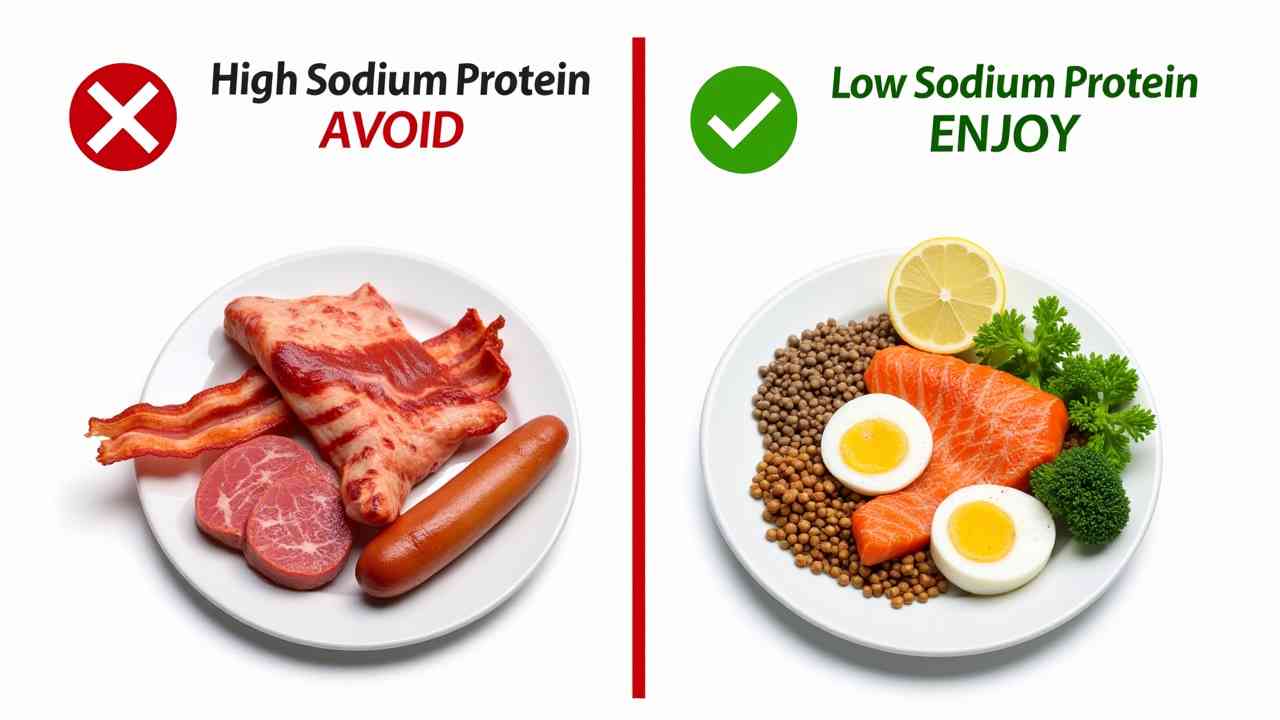
💪 A Guide to High-Protein, Low-Sodium Foods (Healthy & Flavorful!)
💪 A Guide to High-Protein, Low-Sodium Foods (For a Healthy Heart) 💪
Following a diet that is both high in protein and low in sodium can be a challenge. Many convenient, high-protein foods—like deli meats, cheeses, and canned beans—are often loaded with salt. This can be a problem for anyone trying to manage their blood pressure or simply eat a healthier, cleaner diet.
The great news is, there are plenty of delicious and satisfying foods that fit the bill. A high-protein, low-sodium diet is all about choosing fresh, unprocessed ingredients and taking control of the seasoning yourself. It is a powerful way to support your muscle health and your cardiovascular system.
This guide will provide a clear list of the best foods to choose. Let's build a healthy and flavorful shopping list. ✅
🤔 First, What is the Golden Rule of This Diet?
The single most important principle is to cook at home and choose fresh, unprocessed foods. The vast majority of excess sodium in our diets comes from processed and packaged foods, not from the salt shaker at home. By cooking from scratch, you have complete control over how much salt goes into your meal.
- The Ultimate High-Protein, Low-Sodium Food List
Use this list to build your meals. Focus on these lean and clean protein sources.
What are the best poultry and meat options?
The key here is "fresh and unseasoned." Your best choices are:
- Fresh, skinless chicken or turkey breast ("tavuk"): Grill, bake, or roast it yourself. Avoid pre-marinated or rotisserie chicken, which are often very high in sodium.
- Lean cuts of beef or pork: Look for cuts like top sirloin or pork loin.
- Eggs: An incredibly versatile, affordable, and naturally low-sodium protein powerhouse.
You must strictly avoid processed meats like bacon, sausage, hot dogs, and deli turkey.
What about fish and seafood? 🐟
Fresh fish is a fantastic choice. It is naturally very low in sodium and packed with healthy omega-3 fats.
- Fresh fish fillets: Salmon, cod, and tuna are all excellent.
- Canned fish: Be very careful here. You must look for tuna or salmon that is packed in water with "No Salt Added."
How do you handle plant-based proteins? 🌿
This is a tricky category, as many canned beans are high in sodium. Here's how to navigate it:
- Dried beans and lentils ("mercimek"): This is your best option. Cook them from scratch at home to control the salt.
- No-Salt-Added Canned Beans: If you use canned beans, you must buy the "no salt added" version and rinse them thoroughly before using.
- Tofu and edamame: These are naturally low in sodium.
What about dairy? 🥛
Dairy can be a great source of protein, but some products are very salty. The best choices are:
- Plain Greek yogurt ("süzme yoğurt"): It is very high in protein and low in sodium.
- Low-sodium cottage cheese: You must check the label, as regular cottage cheese can be very high in salt.
- Milk: A good source of protein and naturally low in sodium.
You should generally limit hard cheeses ("peynir"), as they are a significant source of sodium.
- How Can You Add Flavor Without Salt?
This is the fun part! A low-sodium diet is an opportunity to explore a world of flavor. Instead of salt, use:
- Herbs: Fresh herbs like dill ("dereotu"), mint ("nane"), and parsley add amazing freshness.
- Spices: Aromatic spices like cumin, smoked paprika, and Turkish red pepper flakes ("pul biber") add warmth and complexity.
- Aromatics: Garlic and onion are your best friends for building a savory base.
- Acids: A squeeze of fresh lemon juice or a splash of vinegar can brighten up any dish.
The cool autumn weather here in Bursa is perfect for making a hearty, low-sodium lentil soup seasoned with delicious herbs and spices. It is a perfect, heart-healthy meal. 🍂